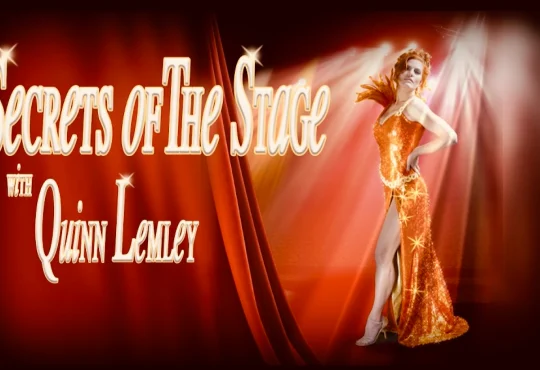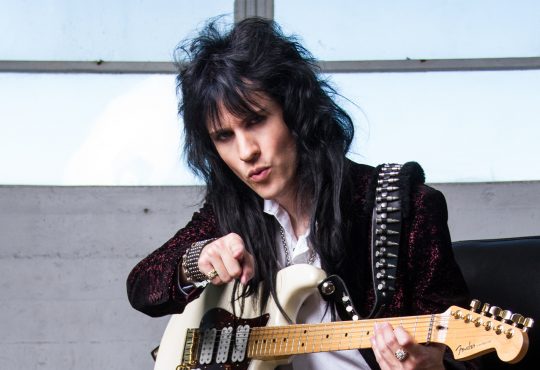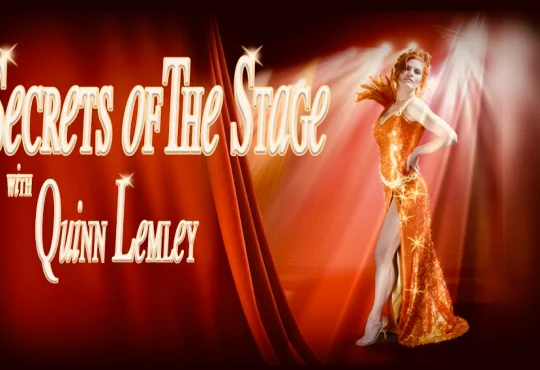‘The Falcon and the Winter Soldier’ Premiere Recap: A Broken World
A review of The Falcon and the Winter Soldier premiere — complete with spoilers — coming up just as soon as I take you out for pinochle…
The Kevin Feige era of Marvel TV began earlier this year with WandaVision, a show about television that was clearly made for television (at least until the finale), and an example of how versatile the Marvel brand can be. Without that MCU tie-in, would a tribute to the history of the American sitcom have been a sensation, or a pop-cultural afterthought? With several Avengers present, WandaVision announced just how many things were possible under that now-familiar logo.
WandaVision only came first, though, because the pandemic disrupted production of The Falcon and the Winter Soldier, which was originally meant to debut late last summer. And had this premiere been our first glimpse of Feige’s, well, vision for Marvel’s small-screen endeavors, the conversation would likely have been very different. Because where WandaVision suggested that Marvel shows could be whatever they wanted, this first chapter of Falcon mostly echoes what we’ve seen before — not just in the MCU films, but in the Marvel series produced when Jeph Loeb was in charge of the TV end of things. It’s hard to judge the episode too strongly, simply because it’s setting up so many story ideas, but it also feels very much like an episode of one of Marvel’s now-abandoned Netflix shows, only with a much bigger budget and more direct ties to the films.
Related: Stream The Falcon and the Winter Soldier on Disney+ here
The premiere opens up more firmly in MCU territory than anything WandaVision did in its early installments. We begin with Sam Wilson (Anthony Mackie) brooding over the shield he inherited from Steve Rogers in the closing minutes of Avengers: Endgame(*), and hear a snippet of their conversation, including Sam admitting that it feels like it’s someone else’s, and Steve assuring him that it isn’t.
(*) Where did this shield come from, anyway? Thanos largely wrecks Steve’s shield during the climactic Endgame battle. Is it something Steve had made — maybe even by Howard Stark — during his decades of peaceful wedded bliss with Peggy Carter? Which, depending on which member of the Endgame creative team you ask, either took place in a parallel timeline or the same one where Steve was frozen for so long? Did Wanda somehow conjure it up while she was building her own sitcom family?
From there, we flash back to Sam on a full-on Falcon mission to stop a terrorist group called LAF — including Batroc, the kick-fighting mercenary who appeared in the opening sequence of Captain America: The Winter Soldier — before they can cross the border into Libya with an American hostage. Sam’s aerial pursuit of Batroc takes him from one plane to another, through canyons and clouds and multiple helicopters, giving it a scope that the action scenes in the Netflix and ABC shows couldn’t afford. Director Kari Skogland shoots it cleanly, and there are some cool individual beats, particularly whenever the LAF goons are flying around themselves using wingsuits. But it’s also a bit repetitive, and both Sam’s wings and his drone Redwing have been souped up to the point where his powers are basically indistinguishable from War Machine’s. Part of the fun of Falcon is that he basically just flies yet can be so effective against bad guys without additional powers. Turning him into a human fighter jet can be entertaining in its own right, but also creates the expectation that any problem can be solved by some previously unknown gadget in the flight harness or Redwing.
If the Batroc chase isn’t equivalent to the best of what we’ve seen from MCU action sequences, it still wouldn’t feel out of place as a tertiary set piece in one of those films. After that, though, we’re in the glum, angsty, sluggishly-paced mode of the Netflix Marvel shows(*). Bucky (Sebastian Stan) is in therapy, still coping with the many atrocities he committed while brainwashed into being the Winter Soldier. Sam gives up the shield, feeling unworthy of it, then heads home to Louisiana to argue with his sister Sarah about whether to sell their parents’ fishing boat and house. A lot of characters and subplots are set up, including another terrorist group called the Flag Smashers, plus the U.S. government’s attempt to introduce a new Captain America now that they have access to the shield again thanks to Sam’s naivete. Mostly, though, it’s a lot of languid shots of one hero or the other feeling bummed about the current state of their lives, and about the state of the world they returned to when the Hulk snapped them back into existence. Our two main heroes don’t even share a scene together, though hopefully that won’t take as long as it did for the Defenders (remember them?) to all appear together in the Netflix miniseries named for that team. Can you say “six-hour movie,” boys and girls?
(*) Skogland actually directed an episode of The Punisher.
Some of this may be less the creative vision of showrunner Malcolm Spellman than the various headaches he inherited from Endgame. It’s very clear in reading interviews with the Russo brothers (who directed it) and the screenwriters that none of them really thought through the consequences of half of humanity abruptly reappearing five years after Thanos turned them into dust. And why would they have? They were all getting ready to graduate from the MCU into other projects. A post-Blip world was not their problem. But it very much is for Spellman and anyone else trying to tell a story in this shared universe. The Blip would be nearly as traumatic an event as Thanos’ snap was, bringing the dead back to a radically different world where their loved ones might have moved on, or literally outgrown them, and where governments and economies were in a shambles(*).
(*) In hindsight, this whole mess was created because nobody wanted to erase Tony Stark’s adorable daughter from existence. The Infinity Gauntlet comic that inspired Avengers: Infinity War and Endgame took place over a much shorter period of time, and ended with everything and everyone being returned to exactly how they were pre-snap.
Spider-Man: Far From Home (which is set in the MCU but has its own concerns, as a Sony/Marvel collaboration) opted to act like this wasn’t a huge deal. WandaVision touched on the Blip through Monica Rambeau’s story, but could have gone even further into the darkness of it: Imagine the poor Westview resident who’s only had a few days to adjust to this new reality before they get trapped in Wanda’s sitcom fantasy.
Falcon and the Winter Soldier takes place about six months after the Blip, and it leans right into how messed up the world would be even following this miracle. The Flag Smashers, we’re told, preferred the more chaotic, less nationalistic world of the previous five years. When Sam tries to trade in on his Avengers celebrity to get a loan that would help out Sarah, it’s clear that the bank and other large institutions are taking advantage of post-Blip chaos to squeeze the little guy. (Given the increased wealth disparity created by the Covid pandemic, it’s the scene of the premiere that feels most connected to our world.)
War Machine himself turns up briefly near the beginning to question Sam about why he gave away the shield, and tells him, “The world’s broken. Everybody’s just looking for somebody to fix it.”
It’s clear that our two title characters will have to help fix things, even if neither is in a great place right now. Sam is doubting his worthiness to succeed Steve. Bucky is trying to make amends in ways likely to create even more hurt — like befriending the father of an innocent bystander he killed on a Winter Soldier mission. Bucky’s the more tormented character right now, though he ironically has some of the premiere’s lighter moments, including a lively session with his government-mandated therapist (played by ace character actor Amy Aquino) and a date with the waitress at his favorite sushi bar, though both scenes ultimately end on the crippling guilt that he feels for what he’s done.
These seem like reasonable character arcs for the season: Sam gets to the point where he feels he deserves the shield — either in his own right or just to take it away from this impostor Cap — and Bucky accepts that he can’t blame himself for the things Hydra made him do. But on paper, a lot of the arcs on Jessica Jones, Daredevil, and Luke Cage were interesting, too(*), only to be ruined by sluggish, repetitive pacing and a lack of interest in making individual episodes stand out.
(*) Not so much Iron Fist, though.
This season will be about half the length of those, so that’s a start. And we know from their scenes together in Captain America: Civil War that Anthony Mackie and Sebastian Stan have great buddy chemistry, albeit the kind where neither buddy really likes the other one. So it’s much too early to get too worried. The premiere is something of an inkblot test. You can look at the Batroc sequence, the scale, the presence of actors like Mackie and Stan and Don Cheadle, and assume this will be substantially different from Marvel’s earlier shows. Of you can look at the scenes of Bucky moping or Sarah hectoring Sam, which make the episode feel substantially longer than its 48 minutes, and worry that the new god of Marvel’s television operations snapped his fingers and made things more or less how they were before.
Some other thoughts:
* Since the new Cap (played by Wyatt Russell) is introduced at the very end, I’ll wait another week to go into his comic-book history. If you want to get the nerdy jump on your friends, though, here’s some backstory on the character, who has gone by several names in print, most notably U.S. Agent.
* Meanwhile, the show seems to be giving a somewhat different version of Flag-Smasher than in the comics of the Eighties, where the character was one individual (and later part of a group called U.L.T.I.M.A.T.U.M., because of course it was). Here’s more info on him.
* Ironically, this dour episode gives Sam a more colorful costume than he had in the movies, playing up the red that’s been the key part of his color scheme in the comics for most of his history. (Though oddly, his initial costume was… green?)
* The movies already had a lot of fun with Steve as a man out of time, so I understand why the show doesn’t want to lean too hard on that note with Bucky. But it feels as if Spellman’s script goes back and forth on how comfortable this man of the Forties is in the modern world.
* For a long time in the comics, every active Avenger got a weekly stipend of $1,000 from a charitable foundation Tony Stark established in his mother’s name. (It becomes a plot point when the always-cash-strapped Spider-Man realizes this is a good reason to try to join the team.) In the MCU, though, the Avengers apparently don’t get paid (or didn’t get paid, I suppose, since it seems that the team is no longer active post-Endgame), and in Civil War, Tony instead donated money in his mom’s name to fund MIT student projects.
* When Sam’s new military buddy Torres asks where Steve Rogers went after Endgame, he shares a conspiracy theory that Cap is now in a secret base on the moon looking down on the people of Earth. This is actually what Marvel did for a while with the original Nick Fury (the old white guy who fought with Cap in WWII, not the middle-aged one who looks like Samuel L. Jackson).
* Nice to see a copy of Jack Kirby’s cover for Captain America Comics #1 at the Smithsonian exhibit, complete with the iconic image of Cap punching out Hitler.
* Finally, Georges St-Pierre certainly is convincing as a guy who can stand toe-to-toe with someone as strong as Captain America or someone with rocket-powered wings like Falcon, but I have to confess to missing the caricatured French accent and ridiculous mustache he has in the comics.







